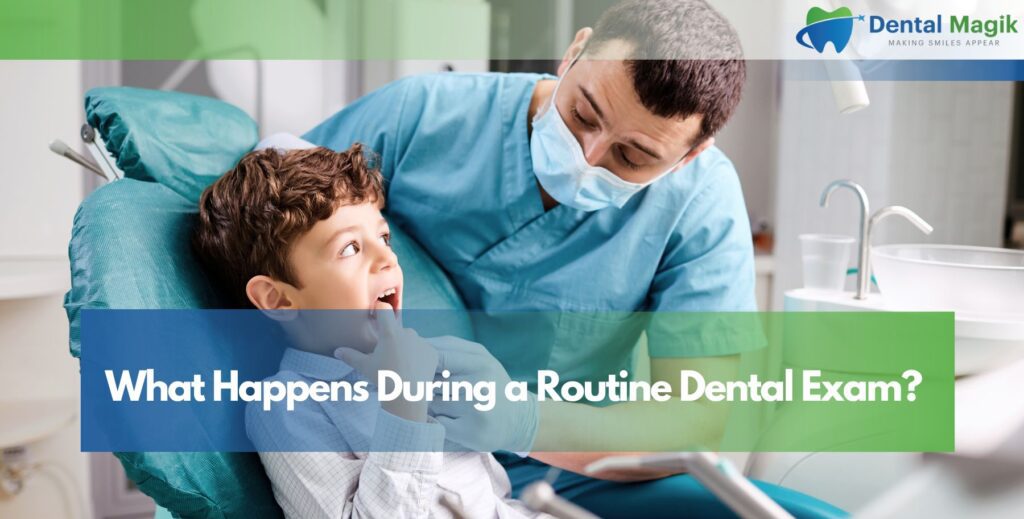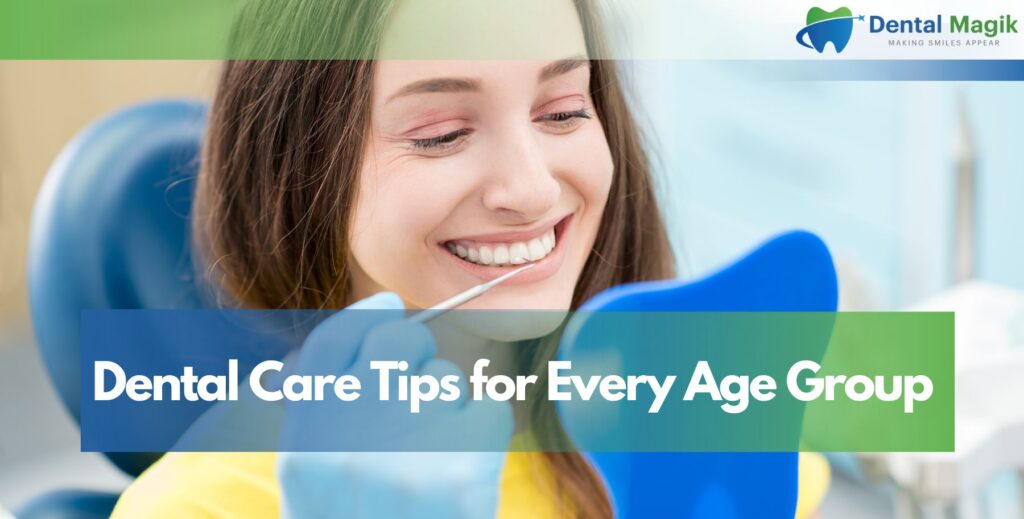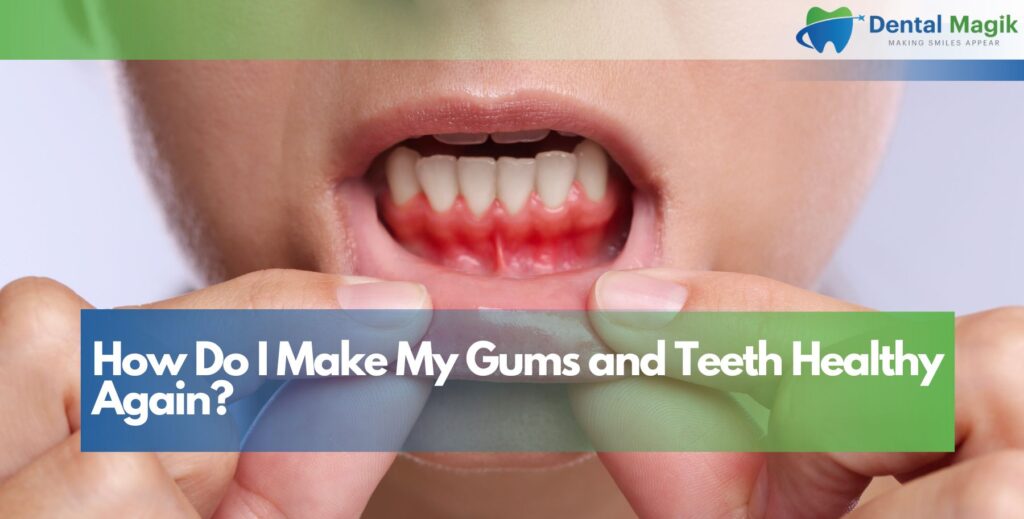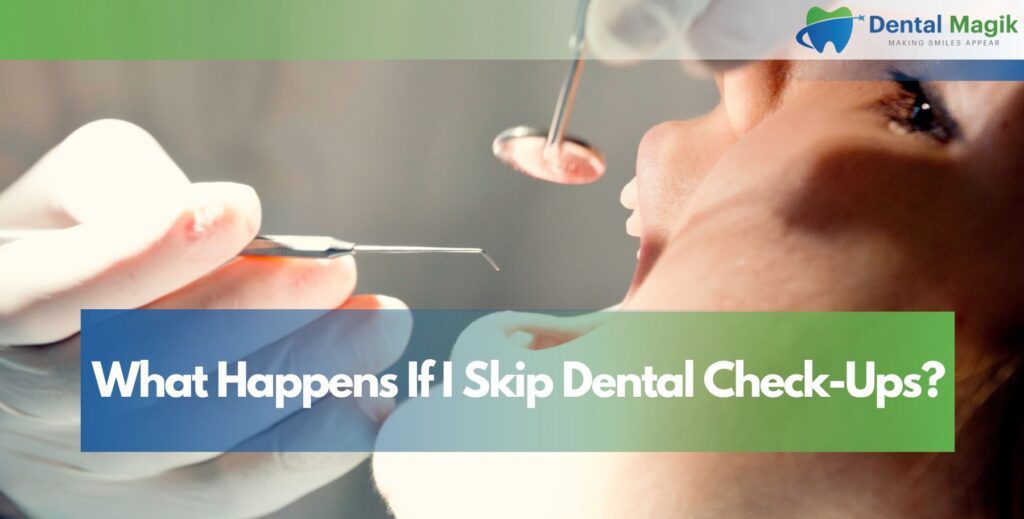Visiting the dentist isn’t just about solving dental problems—it’s about preventing them before they start. A routine dental exam plays a big role in maintaining your overall oral health and spotting issues early when they’re easier (and cheaper) to treat.
Still, many people avoid the dentist out of fear, uncertainty, or simply not knowing what happens during the appointment. This guide will walk you through everything that happens during a routine dental checkup, step-by-step, so you know exactly what to expect.
Why Routine Dental Exams Are So Important
Skipping dental visits may not seem like a big deal, but it can lead to serious long-term problems. Routine dental exams are your first line of defense against tooth decay, gum disease, and oral infections. These checkups also help catch early signs of oral cancer, and they keep your smile looking clean and fresh.
Most dentists recommend a checkup every six months, but this can vary depending on your dental history and needs.
Early Detection Saves Money and Pain
Dental problems that go unnoticed often become more painful and expensive to treat later. A small cavity caught during a checkup might be treated with a simple filling. Wait too long, and you may need a root canal or even a tooth extraction.
Peace of Mind and Better Hygiene
Even if you brush and floss daily, a professional exam and cleaning ensures you’re doing everything right. A hygienist can clean spots you miss, and your dentist can guide you on how to improve your oral care routine.
What to Expect During a Routine Dental Exam
Here’s a breakdown of what typically happens during a standard dental checkup. Knowing each step can help ease any nerves and help you prepare.
Step 1 – Medical and Dental History Review
Your dental team starts by asking about your general health, medications, past dental issues, or any recent pain or discomfort. This helps them customize your care.
If it’s your first visit, you’ll fill out a health questionnaire. If you’re a returning patient, they’ll check for any changes since your last visit.
Why This Step Matters
Your oral health is closely tied to your overall health. Conditions like diabetes, high blood pressure, or even certain medications can affect your gums, teeth, or saliva flow. By understanding your full health picture, your dentist can offer safe and effective treatment.
Step 2 – Dental X-rays (If Needed)
Not every visit includes X-rays, but most dentists recommend them once a year. X-rays allow your dentist to see below the surface—checking for bone loss, decay between teeth, impacted teeth, and other hidden issues.
There are different types of X-rays, including:
- Bitewing X-rays – to check between teeth
- Periapical X-rays – to view the entire tooth and root
- Panoramic X-rays – to scan the full mouth and jaw
Are Dental X-rays Safe?
Yes, modern dental X-rays use very low levels of radiation and are safe for most patients. Protective vests are used to minimize exposure.
Step 3 – Dental Cleaning (Performed by a Hygienist)
This is the part most people are familiar with—the actual cleaning. Your dental hygienist uses specialized tools to:
- Remove plaque and tartar (calculus)
- Clean around the gumline
- Polish your teeth for a smooth, shiny finish
- Floss between teeth
Why Professional Cleaning Matters
No matter how well you brush at home, it’s hard to remove tartar buildup once it hardens. That’s where professional cleanings come in. Cleanings prevent gum inflammation and periodontal disease, both of which can lead to tooth loss if left untreated.
Step 4 – Oral Examination by the Dentist
After the cleaning, the dentist examines your teeth and gums. Using a small mirror and dental explorer, they’ll check for:
- Cavities
- Gum recession
- Signs of infection
- Loose teeth
- Oral cancer symptoms
The Dentist May Also Check:
- Your bite alignment
- Your jaw joint for clicking or popping
- Any previous dental work (like fillings, crowns, or implants)
Step 5 – Oral Cancer Screening
This part of the exam is fast but vital. Your dentist will gently check your:
- Tongue
- Gums
- Cheeks
- Throat
- Jaw
- Neck lymph nodes
They’re looking for any unusual spots, lumps, or discoloration that could be early signs of oral cancer.
Step 6 – Discussing Results and Recommendations
Once your exam is done, your dentist will talk you through what they found. If you have no issues, you’ll be advised to return in six months. If there’s a cavity or gum problem, they’ll create a treatment plan and explain your options.
What If You Need More Work?
You may be referred for further treatments like:
- Fillings
- Deep cleaning (scaling and root planing)
- Root canals
- Crowns or bridges
- Orthodontics if you need braces or aligners
How Long Does a Routine Dental Exam Take?
Most checkups take 45 minutes to an hour. If X-rays or additional treatment is needed, it may take a little longer.
How Much Does a Routine Dental Exam Cost Without Insurance?
The cost can range from $80 to $250, depending on your location, the clinic, and what’s included (cleaning, X-rays, consultation). Many clinics, including those in East Brunswick, NJ, offer affordable dental packages for uninsured patients.
How to Prepare for a Dental Checkup
Here are some quick tips to get ready:
- Brush and floss before your visit
- Bring a list of medications
- Write down questions you want to ask
- Tell the staff about dental anxiety—they can help!
Conclusion
A routine dental exam is not something to be afraid of—it’s a simple but essential part of maintaining your oral and overall health. It keeps your teeth strong, helps detect problems early, and gives you peace of mind. Whether it’s been six months or six years since your last visit, the best time to book is now.
If you’re looking for professional care, personal attention, and a friendly environment, schedule your next checkup with a trusted Dentist in East Brunswick, NJ and take the first step toward a healthier, brighter smile.
FAQs
How often should I get a dental exam?
Most people should visit the dentist every six months. Your dentist may recommend more frequent visits if you have gum disease, cavities, or other oral health concerns.
Do I need dental X-rays at every visit?
Not always. Most patients get X-rays once a year unless there’s a specific issue your dentist wants to monitor.
Is a dental cleaning included in a routine exam?
Yes, in most cases, a professional cleaning is part of the routine dental exam, unless there are specific issues that require separate treatment.
What should I do before a dental checkup?
Brush and floss your teeth, avoid eating right before your visit, and bring any questions or concerns to discuss with your dentist.
Can a routine exam detect serious problems early?
Absolutely. Routine exams help catch cavities, gum disease, oral cancer, and even signs of other health issues before they become serious.







